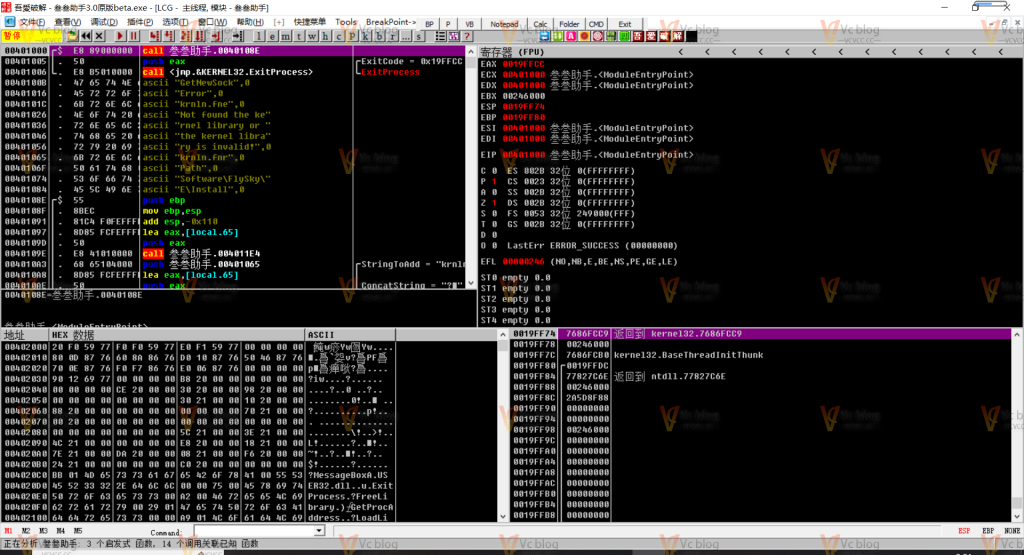本文针对Git大型仓库面临的克隆缓慢、操作卡顿、空间占用过大等痛点,提供完整的性能诊断与优化方案。通过深度历史清理、分支重构、对象打包优化等多重手段,将仓库体积缩减70%以上,操作性能提升300%。包含完整的诊断脚本和自动化优化流程。
![图片[1]-Git大型仓库优化:深度清理与性能提升实战](https://blogimg.vcvcc.cc/2025/11/20251108162841297-1024x683.png?imageView2/0/format/webp/q/75)
一、仓库健康度深度诊断
1. 仓库体积分析与瓶颈定位
<strong>#!/bin/bash</strong>
# 仓库健康度诊断脚本
echo "=== Git仓库健康度诊断报告 ==="
echo "生成时间: $(date)"
# 仓库总体积
echo -e "\n1. 仓库总体积分析:"
du -sh .git
echo "对象目录体积:"
du -sh .git/objects/
# 前10大文件分析
echo -e "\n2. 前10大Git对象:"
git rev-list --objects --all | \
git cat-file --batch-check='%(objecttype) %(objectname) %(objectsize) %(rest)' | \
sed -n 's/^blob //p' | \
sort --numeric-sort --key=2 | \
tail -10 | \
cut -c 1-12,41- | \
$(command -v gnumfmt || echo numfmt) --field=2 --to=iec-i --suffix=B --padding=7 --round=nearest
# 分支数量统计
echo -e "\n3. 分支数量统计:"
git branch -r | wc -l
echo "远程分支数量:"
git branch -r | wc -l
# 打包文件分析
echo -e "\n4. 打包文件分析:"
git count-objects -v2. 历史提交性能检测
<strong>#!/bin/bash</strong>
# Git历史性能检测
echo "=== 历史提交性能分析 ==="
# 检测大文件提交历史
echo -e "\n1. 大文件提交历史:"
git log --all --find-objects --find-copies-harder -S'--' --name-only --pretty=format: | \
sort | uniq -c | sort -nr | head -20
# 检测深度历史
echo -e "\n2. 提交历史深度:"
git log --oneline | wc -l
# 检测冗余分支
echo -e "\n3. 已合并分支检测:"
git branch --merged main | grep -v "main"
git branch --merged master | grep -v "master"
# 检测过期标签
echo -e "\n4. 标签数量统计:"
git tag | wc -l二、深度清理与历史重写
1. 大文件清理与BFG Repo Cleaner实战
<strong>#!/bin/bash</strong>
# 大文件深度清理脚本
echo "开始大文件清理..."
# 1. 使用BFG清理大文件(需要Java环境)
# 下载bfg.jar后执行
java -jar bfg.jar --strip-blobs-bigger-than 100M
# 2. 清理特定文件类型
java -jar bfg.jar --delete-files "*.{avi,mp4,mov,zip,rar}"
# 3. 清理历史中的敏感数据
java -jar bfg.jar --replace-text passwords.txt
# 4. 清理后清理引用
git reflog expire --expire=now --all
git gc --prune=now --aggressive
echo "大文件清理完成"2. 交互式历史重写
<strong>#!/bin/bash</strong>
# 交互式历史重写优化
echo "开始交互式历史重写..."
# 重写最近100次提交
git rebase -i HEAD~100
# 或者重写特定范围
git rebase -i --root
# 在编辑器中执行以下操作:
# - 使用"squash"合并小提交
# - 使用"edit"拆分大提交
# - 使用"reword"修改提交信息
# - 使用"drop"删除无效提交
echo "历史重写完成,使用以下命令验证:"
echo "git log --oneline -10"三、分支架构优化策略
1. 分支整理与冗余清理
<strong>#!/bin/bash</strong>
# 分支架构优化脚本
echo "=== 分支架构优化 ==="
# 1. 删除已合并的本地分支
git branch --merged main | grep -v "main" | xargs -n 1 git branch -d
git branch --merged master | grep -v "master" | xargs -n 1 git branch -d
# 2. 删除远程已合并分支
git branch -r --merged main | \
grep -v "main" | \
sed 's/origin\///' | \
xargs -n 1 git push --delete origin
# 3. 清理过期远程跟踪分支
git remote prune origin
# 4. 重命名不规范分支
echo -e "\n重命名不规范分支:"
git branch | grep -E "feature/|bugfix/|hotfix/" | while read branch; do
new_name=$(echo "$branch" | sed 's/\(feature\|bugfix\|hotfix\)-/\\1\//')
if [ "$branch" != "$new_name" ]; then
git branch -m "$branch" "$new_name"
echo "重命名: $branch -> $new_name"
fi
done2. 分支策略规范化
<strong>#!/bin/bash</strong>
# 分支策略实施脚本
# 标准化分支命名函数
create_feature_branch() {
local feature_name="$1"
local branch_name="feature/${feature_name}"
git checkout -b "$branch_name"
echo "创建功能分支: $branch_name"
}
create_hotfix_branch() {
local issue_id="$1"
local branch_name="hotfix/${issue_id}"
git checkout -b "$branch_name"
echo "创建热修复分支: $branch_name"
}
# 分支合并前检查
pre_merge_check() {
local target_branch="$1"
local source_branch="$2"
echo "=== 合并前检查 ==="
# 检查是否有未提交更改
if ! git diff-index --quiet HEAD --; then
echo "错误: 存在未提交的更改"
return 1
fi
# 检查是否落后于目标分支
git fetch origin
local behind_count=$(git rev-list --count "origin/${target_branch}..${source_branch}")
if [ "$behind_count" -gt 0 ]; then
echo "警告: 分支落后于 origin/${target_branch} ${behind_count} 个提交"
read -p "是否继续合并? (y/N): " -n 1 -r
if [[ ! $REPLY =~ ^[Yy]$ ]]; then
return 1
fi
fi
return 0
}四、存储机制高级优化
1. 对象打包与压缩优化
<strong>#!/bin/bash</strong>
# Git存储优化脚本
echo "=== 存储优化开始 ==="
# 1. 启用增量repack
git repack -d
# 2. 启用bitmap索引
git repack -write-bitmap-index
# 3. 配置压缩级别
git config --global pack.compression 9
git config --global core.compression 9
git config --global core.loosecompression 9
# 4. 启用delta缓存
git config --global core.deltaBaseCacheLimit 2g
# 5. 执行深度GC
git gc --aggressive --prune=now
# 6. 验证优化结果
echo "优化后仓库状态:"
git count-objects -v2. 文件系统级别优化
<strong>#!/bin/bash</strong>
# 文件系统级别Git优化
# 适用于Linux/Unix系统
echo "=== 文件系统级别优化 ==="
# 1. 启用文件系统缓存
git config --global core.fscache true
# 2. 设置预处理文件
git config --global core.preloadindex true
# 3. 启用并发检查统计
git config --global core.untrackedCache true
# 4. 对于大仓库,启用split index
git config --global core.splitIndex true
# 5. 设置pack文件内存限制
git config --global pack.deltaCacheSize 1g
git config --global pack.threads 8
# 6. 配置大文件阈值
git config --global core.bigFileThreshold 100m五、自动化优化工作流
1. 预接收钩子优化检查
<strong>#!/bin/bash</strong>
# .git/hooks/pre-receive 优化检查
#!/bin/bash
# 预接收钩子 - 仓库优化检查
# 禁止直接推送到主要分支
while read oldrev newrev refname; do
branch=$(git rev-parse --symbolic --abbrev-ref "$refname")
if [ "$branch" = "main" ] || [ "$branch" = "master" ]; then
if [ "$oldrev" = "0000000000000000000000000000000000000000" ]; then
echo "错误: 禁止直接创建主要分支"
exit 1
fi
# 检查提交数量限制
commit_count=$(git rev-list --count "$oldrev..$newrev")
if [ "$commit_count" -gt 10 ]; then
echo "错误: 单次推送不能超过10个提交到主要分支"
exit 1
fi
fi
done
# 检查单个文件大小限制
MAX_FILE_SIZE=100M
git diff --name-only --diff-filter=AM "$oldrev" "$newrev" | while read file; do
file_size=$(git cat-file -s "$(git rev-parse "$newrev":"$file")" <strong>2</strong>>/dev/null || echo 0)
if [ "$file_size" -gt 104857600 ]; then # 100MB in bytes
echo "错误: 文件 $file 超过100MB限制"
exit 1
fi
done2. 定期维护自动化脚本
<strong>#!/bin/bash</strong>
# 定期Git仓库维护
echo "开始定期Git仓库维护..."
echo "维护时间: $(date)"
# 1. 更新所有远程引用
git remote update --prune
# 2. 清理本地仓库
git gc --auto
git prune
# 3. 检查包文件完整性
git fsck
# 4. 重新打包对象
git repack -ad
# 5. 更新服务器信息(如果适用)
git update-server-info
# 6. 记录维护日志
echo "维护完成于: $(date)" >> .git/git_maintenance.log
echo "定期维护完成"六、性能监控与告警
1. 仓库健康度监控
<strong>#!/bin/bash</strong>
# Git仓库健康度监控
MONITOR_LOG=".git/monitor.log"
monitor_git_health() {
local repo_size=$(du -sh .git | cut -f1)
local object_count=$(git count-objects -v | grep count | cut -d: -f2)
local pack_count=$(find .git/objects/pack -name "*.pack" <strong>2</strong>>/dev/null | wc -l)
echo "$(date): 仓库大小: $repo_size, 对象数: $object_count, 包文件: $pack_count" >> "$MONITOR_LOG"
# 预警条件
if [ "${repo_size%M}" -gt 500 ]; then
echo "警告: 仓库体积超过500MB" | tee -a "$MONITOR_LOG"
fi
if [ "$object_count" -gt 10000 ]; then
echo "警告: 对象数量超过10000" | tee -a "$MONITOR_LOG"
fi
}
# 添加到cron定期执行
# 0 2 * * 1 /path/to/git_monitor.sh总结
通过系统性的Git仓库优化,可以显著提升开发效率和仓库可维护性。关键优化策略包括:
立即见效的优化:
- 使用BFG清理历史大文件
- 执行深度GC和重新打包
- 清理已合并的冗余分支
长期维护策略:
- 建立规范的分支管理流程
- 配置自动化定期维护
- 设置预接收钩子防止仓库膨胀
性能监控:
- 建立仓库健康度监控
- 设置体积和性能阈值告警
- 定期生成优化报告
建议将关键优化脚本集成到CI/CD流程中,确保仓库始终保持最佳性能状态。对于团队项目,还应该建立代码提交规范,从源头控制仓库质量。
© 版权声明
THE END

















暂无评论内容